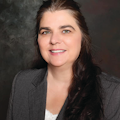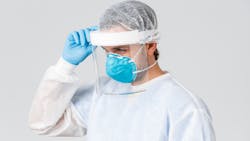The new normal—Will you embrace the change or resist it?
Reflecting on the last year, dental professionals have faced and embraced some difficult challenges as we have adapted to the reality or “new normal” that is COVID-19. On December 31, 2019, China alerted the World Health Organization (WHO) of several cases of a new flulike virus (novel coronavirus) in Wuhan of undetermined origin, which would come to be known as COVID-19.1
United States Secretary of Health and Human Services Alex Azar declared a public health emergency on January 31, 2020; however, it would be several months before the world would be aware of the severity and highly contagious nature of this novel coronavirus. COVID-19 cases would increase exponentially across the entire world, causing the WHO to characterize COVID-19 as a pandemic on March 11, 2020.1
Following the end of the national shelter-in-place order, dentistry would experience a panic that has redefined the way dental professionals provide care in the fluid environment surrounding COVID-19. Welcome to what has come to be known as “the new normal.”
Adapting to “the new normal”
Historically, dentistry and medicine have witnessed changes from infectious agents that have required us to quickly adapt the way we provide care. Prior to the HIV/AIDs pandemic in the 1980s, dental providers routinely provided care without gloves or masks, often while wearing everyday attire. A person donning a mask while providing care would have been assumed to have been sick. Masks and gloves were typically used only for periodontal or oral surgeries.
It was not until the Occupational Safety and Health Administration (OSHA) enacted the Bloodborne Pathogens Standard2 that gloves, lab coats, safety glasses, and masks became the standard or new normal for dental providers. Several industry infection control measures, such as autoclaving handpieces, would also be adopted, thus reassuring the public that visiting the dental office was safe. Dentistry adapted to the new normal and continued to provide care in a new, safer environment for both the staff and patient. Likewise, dentistry will rise up from our experiences with COVID-19.
Many differences exist between dealing with a bloodborne pathogen and dealing with an invisible airborne pathogen. Dental providers are well educated in ways to break the chain of infection to prevent exposure. As the news of COVID-19 began to engulf our lives early in the year, the dental community—researchers, providers, and public health officials—were evaluating the complex and fluid nature of dealing with this novel zoonotic virus. Early research positively determined that COVID-19 was highly infectious and had the ability to linger in the air for long periods of time. The Occupational Information Network (O*NET) identified dental providers, specifically hygienists, as having the highest risk of contracting COVID-19 due to the time spent in close proximity to the patient.3 Researchers quickly began and continue to evaluate infection control measures, make recommendations, and provide guidance in a rapidly changing landscape.
Have a plan
During the national shelter-at-home order, the American Dental Association (ADA), the Centers for Disease Control and Prevention (CDC), and the WHO evaluated the risks and protections that would enable us to return to practice. Having an exposure plan in place for tuberculosis provided a building block for what would quickly become our new normal in personal protective equipment (PPE). The Level 2 or 3 mask would be replaced with a KN95 or N95, goggles would be replaced with a full-face shield, full-length gowns would replace short clinical lab coats, and recommendations for hair coverings became the new norm. Many offices have purchased air purifying units with or without UV lights, additional HVE devices, and room foggers. Some of these have little supporting scientific research against SARS-COV-2; however, as professionals who deal with infection control daily, we feel that as long as it does not harm ourselves or patients, it cannot hurt to try. Science has demonstrated that infection is a function of exposure over time; therefore, any modality that contributes to the reduction of any pathogen will lessen our chances of contracting illnesses.
Embrace or resist?
So, what is the new norm? Will you embrace the change or resist it? The new norm can vary depending on the office and protocols each has implemented. The new norm is wearing PPE that is hot, impersonal, and makes performing our jobs more difficult. In addition, it is preprocedural rinses, rubber dams, HVE, and hand scaling. It is providing care to our patients while worrying about exposing ourselves, patients, and family. It may include providing in-office COVID tests prior to extensive and invasive treatments. The new norm means taking extra steps in disinfecting our treatment rooms, allowing additional time between appointments, seeing fewer patients a day or, in some instances, working longer days. As for our patients, the new norm is a range of emotions from grief to elation, which can impact our ability to provide care in a timely manner. In addition to being an oral health specialist, we have taken on the role of counselor or consoler.
While we have discussed the new normal from the prospective of the hygienist, let us not forget that in dentistry we are a team. Each member of the dental team has new stresses, or what can be called COVID stresses. For example, prior to COVID, the front desk personnel did not don PPE. Now they are wearing masks, sitting behind plexiglass shields, conducting COVID questionnaires, and assisting with overall general housekeeping disinfection between patients. They are taking calls from patients, filling the schedule when it falls apart, and struggling to verify insurance as representatives are now working from home with limited information.
Finally, the dentist—as if the stress of running a dental practice were not already daunting—faces new levels of complexity. Each week brings workforce shortages that affect the entire team. This shortage is the result of employees juggling careers while caring for children, homeschooling, or caring for family members. Another major challenge is obtaining PPE and other dental supplies. COVID has affected global supply chains and manufacturing production, causing shortages across many aspects of dentistry. Some dental offices have difficulty absorbing exorbitant supply bills, utilities, insurance, and payroll when office closures and cancelled appointments have created deficits in income. Most dental offices are private practices without any assistance from government funding, so the burden of maintaining a successful practice rests on the shoulders of the practice owner.
It will likely be a long time before dentistry returns to a semblance of the old normal. Some things will never return as they were before, even when a vaccine becomes available. Patients may need reassurance before they feel it is safe to return for dental care. Be willing to educate them and answer their questions. As we continue to move forward in this fluid situation, the marketplace, technology (air purifiers, etc.), office fee schedules, and operatory design will catch up to the new normal. While we may never return to where we were before the world came to a halt on March 11, 2020, we will come out of this stronger! As Herodotus the Greek philosopher once said, “Adversity has the effect of drawing out strength and qualities of a man that would have lain dormant in its absence.”
Author’s note: This article in no way supports or endorses any infection control modality mentioned. It serves only as a summation of what the author has witnessed from interacting with peers in the dental community and as a discussion of what one may witness as the new normal in dentistry.
References
- Timeline of WHO’s response to COVID-19. World Health Organization. Updated September 9, 2020. https://www.who.int/news/item/29-06-2020-covidtimeline
- Statement of Charles N. Jeffress, Assistant Secretary, Occupational Safety and Health Administration, U.S. Department of Labor, before the Subcommittee on Workforce Protections, House Education and the Workforce Committee. Occupational Health and Safety Administration. June 22, 2000. https://www.osha.gov/news/testimonies/06222000#:~:text=OSHA%20published%20the%20final%20bloodborne,and%20other%20potentially%20infectious%20materials.&text=In%201987%2C%20there%20were%208%2C700,infection%20among%20health%20care%20worker
- Biasco P. As Americans go back to work, these are the 9 riskiest jobs to have in the middle of a pandemic. Business Insider. July 13, 2020. https://www.businessinsider.com/riskiest-jobs-after-coronavirus-lockdowns-lift-2020-6
Lori Gordon Hendrick, MS, RDH, CDA, CDT, is a dental office infection control consultant. She practices clinical hygiene and functions as office manager in a busy private practice in North Carolina. She also owns and operates Athena Dental Solutions LLC, a dental lab and consulting business. She has personal experience in developing and training dental office staff in OSHA, infection control, and HIPAA. Throughout her career in dentistry, she has experienced two OSHA inspections without any fines or penalties. She may be reached at [email protected].
About the Author

Lori Gordon Hendrick, PhDc, MS, RDH, CDA, CDT
Lori Hendrick, PhDc, MS, RDH, CDA, CDT, is working toward a PhD in public administration and policy with a concentration in health policy at Old Dominion University. In addition to practicing dental hygiene, she owns Athena Dental Solutions and teaches clinical hygiene and professional development at Central Piedmont Community College. She’s a past president of the North Carolina Dental Hygiene Association, a consultant on the North Carolina Dental Society Work Force Task Force, and on the board of directors for North Carolina Caring Dental Professionals. Email Lori at [email protected].
Updated February 4, 2022
